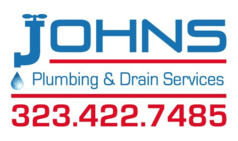As a property owner in Los Angeles, CA, ensuring the safety and quality of your water supply is paramount. One crucial aspect of maintaining a clean and safe water supply is preventing backflow, an undesirable reversal of water flow through your plumbing system that can contaminate your drinking water with pollutants or hazardous substances.
At John’s Plumbing & Drain Services, we specialize in comprehensive residential and commercial plumbing services in Los Angeles, CA, including the installation, maintenance, and repair of backflow prevention devices designed to protect your property’s water supply.
In this blog, we will explore the importance of backflow prevention for your Los Angeles home or business, the types of backflow prevention devices available, and the essential maintenance practices to keep your backflow prevention system functioning effectively.
Additionally, we will discuss the regulatory requirements for backflow prevention in Los Angeles and how engaging the expertise of a professional plumbing service like John’s Plumbing & Drain Services can help ensure compliance with these regulations.
Understanding Backflow and Its Causes
Backflow is the unwanted reversal of water flow that can occur in your plumbing system, causing contaminants to enter your property’s water supply. There are two primary causes of backflow:
1. Backpressure: This occurs when the pressure in your property’s plumbing system is higher than the pressure in the public water supply, causing water to flow backward.
2. Backsiphonage: This happens when the pressure in the public water supply drops significantly, resulting in an imbalance that pulls the contaminated water from your plumbing system into the potable water supply.
In either case, the reversal of water flow can lead to the contamination of your property’s drinking water with pollutants such as chemicals, fertilizers, pesticides, or sewage.
The Role of Backflow Prevention Devices
Backflow prevention devices are designed to protect your potable water supply by preventing the reversal of water flow, keeping contaminants from entering your plumbing system. There are several types of backflow prevention devices, including:
1. Reduced Pressure Zone (RPZ) Devices: RPZ devices are installed in high-hazard situations, such as commercial properties, hospitals, or factories. These devices consist of two check valves with a pressure relief valve in between, making them highly effective at preventing backflow.
2. Double Check Valves: These devices are typically used in low to medium hazard situations, such as residential properties. Double check valves consist of two spring-loaded valves designed to prevent backflow when water pressure changes or fluctuates.
3. Vacuum Breakers: Vacuum breakers are often used in irrigation systems, outdoor faucets, and commercial boilers. They utilize an air inlet valve that prevents backflow by allowing air to enter and break the vacuum created by backsiphonage.
Backflow Prevention Regulations and Local Compliance
In Los Angeles, backflow prevention devices are required on certain properties to protect the public’s health and safety by preventing water supply contamination. The Los Angeles Department of Water and Power (LADWP) requires property owners to install and maintain backflow prevention devices, as well as submit to annual testing and inspection of the devices.
Ensuring proper backflow prevention device installation and maintenance compliance with local regulations may seem overwhelming, but partnering with a reliable plumbing service like John’s Plumbing & Drain Services can alleviate the stress. Our experienced plumbers can provide installation, maintenance, and repair services for your backflow devices, helping you meet local compliance requirements.
Maintaining Your Backflow Prevention System
Proper maintenance of your backflow prevention system plays a vital role in ensuring the ongoing safety and quality of your water supply. The following maintenance practices can help extend the life of your backflow prevention devices and maximize their effectiveness:
1. Annual Testing: Los Angeles regulations require annual testing of backflow prevention devices by a certified backflow tester. Regular testing helps identify potential issues early, preventing failure or contamination of your water supply.
2. Inspection and Repairs: During annual testing, all components of the backflow prevention device should be inspected for wear or damage. If any issues are detected, prompt repairs should be carried out to maintain the device’s effectiveness.
3. Replacement: Backflow prevention devices have a finite lifespan, and replacement of the device may become necessary over time. Consulting with a professional plumber, like John’s Plumbing & Drain Services, can help you determine the appropriate time to replace your backflow prevention device.
The Importance of Backflow Prevention for Your Los Angeles PropertyFinal Thoughts
Backflow prevention is an essential aspect of maintaining a safe and contamination-free water supply for your Los Angeles home or business. By understanding the causes of backflow, installing the appropriate backflow prevention devices, and adhering to local compliance regulations, you can protect your property’s water supply from pollutants and harmful substances.
Do you need assistance with backflow prevention for your home or business? Contact our 24-hour plumber in Los Angeles at John’s Plumbing & Drain Services to schedule an installation, maintenance, or repair service appointment. Ensure the safety and quality of your water supply with our reliable and professional backflow prevention solutions.

















